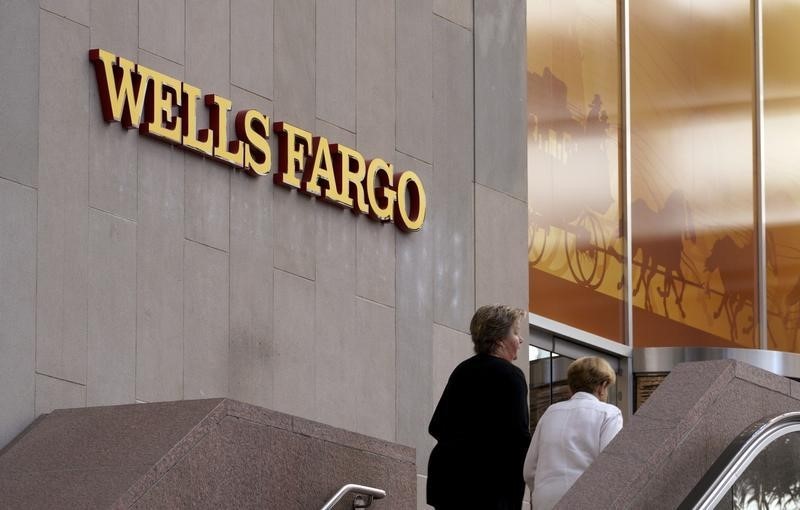As the economic landscape changes, the resilience of consumer spending appears increasingly tied to the availability and cost of credit.
With pandemic-era savings largely depleted and a weakening labor market raising doubts about future income growth, the role of credit is becoming increasingly important, Wells Fargo analysts said in a Monday note.
“Broad-based weakness in the July jobs report raised questions about whether the policy environment has remained too restrictive for too long, while recent consumer spending data remains stronger than expected,” the analysts said.
Real personal consumption expenditures (PCE) rose 2.3% year over year in the second quarter, driven by strong durable goods purchases and consistent spending on services. Early indicators also point to a strong start for the third quarter.
However, the slowing pace of hiring in July, combined with other weakening labor market indicators, suggests that income growth could be under pressure, potentially putting pressure on consumer spending in the near future.
If the labor market had cooled earlier, households would have been better prepared for job losses or slower income growth. As savings have been depleted, credit has taken on a more important role in maintaining consumer spending.
Revolving consumer credit, especially credit card debt, has overtaken other forms of household debt in this economic cycle. However, the pace of borrowing has slowed dramatically in 2024, with outstanding revolving debt declining in two of the past three months.
This trend, combined with rising payment arrears and higher credit costs, suggests that credit is becoming less accessible, although belt-tightening by households may also be a contributing factor.
Total revolving credit is now more than 20% above pre-pandemic levels and has grown almost eight times faster in this cycle than the last, raising concerns about over-indebtedness.
However, adjusted for higher incomes, the increase in revolving credit appears less alarming. The credit-to-income ratio remains below pre-pandemic levels, although it is important to note that this ratio does not take into account who has the debt and who earns the income.
This distinction is critical, especially given the higher costs of servicing debt today. Delinquencies are on the rise, with more than 9% of credit card borrowers falling 30 days behind on payments – the highest delinquency rate among major household debt categories.
While credit cards are the fastest growing debt category, mortgage debt remains the largest, accounting for more than 70% of all household debt. Households that have refinanced during the pandemic have benefited from lower fixed interest rates, with the effective interest rate on all outstanding mortgage debt in the second quarter standing at just 3.9%, nearly 300 basis points below the average new 30-year conventional mortgage rate of 6.8 %. These lower interest rates have kept mortgage delinquencies below pre-pandemic levels.
In the mid-2000s, many homeowners took advantage of rising home values with mortgage loans or lines of credit (HELOCs), contributing to the housing bubble and financial crisis.
Although the use of HELOCs has increased, home prices have generally outpaced the growth of these loans, keeping homeowners’ equity at record highs. This equity provides an important source of liquidity, allowing homeowners to maintain their expenses.
While HELOCs aren’t as cheap as they were a few years ago, they remain more affordable than credit card debt, with rates typically only a few percentage points higher than prevailing 30-year mortgage rates.
This makes HELOCs a more attractive option for larger expenses, although they come with the risk of using homes as collateral.
Despite high credit costs, demand for credit card loans remained strong in the second quarter. However, as economic conditions deteriorate and defaults increase, banks become more cautious.
The Federal Reserve’s latest credit survey shows banks are tightening consumer lending limits and raising the minimum credit scores required for new credit card loans.
In contrast, banks are showing a greater willingness to provide consumer installment loans, especially for large purchases of durable goods, such as furniture or appliances.
While the latest figures may seem unremarkable, with banks’ willingness to lend at 0.0%, this represents a significant improvement on last year’s negative figures, indicating a cautious recovery in lending.
The current credit environment shows a growing gap. Credit remains available and relatively affordable for loans secured by assets, especially real estate.
However, this is cold comfort for the 34% of households that do not own a home. The situation is particularly dire for low-income tenants.
These households are more likely to carry a revolving credit card balance, which has become increasingly expensive in today’s high interest rates.
The situation is made worse by the fact that lower-income households tend to spend a greater share of their income on non-discretionary items like gasoline and groceries, where prices have risen faster than broader inflation.
This has contributed to the rising rate of credit card defaults among lower income and younger borrowers.
While consumers have continued to spend despite rising interest rates, it would be a mistake to conclude that this has not been affected. The increasing dependence on credit, especially among lower-income households, underlines the precariousness of the current economic situation.
As access to credit becomes more limited and expensive, the continued strength of consumer spending may ultimately depend on how well households can navigate this challenging environment.


